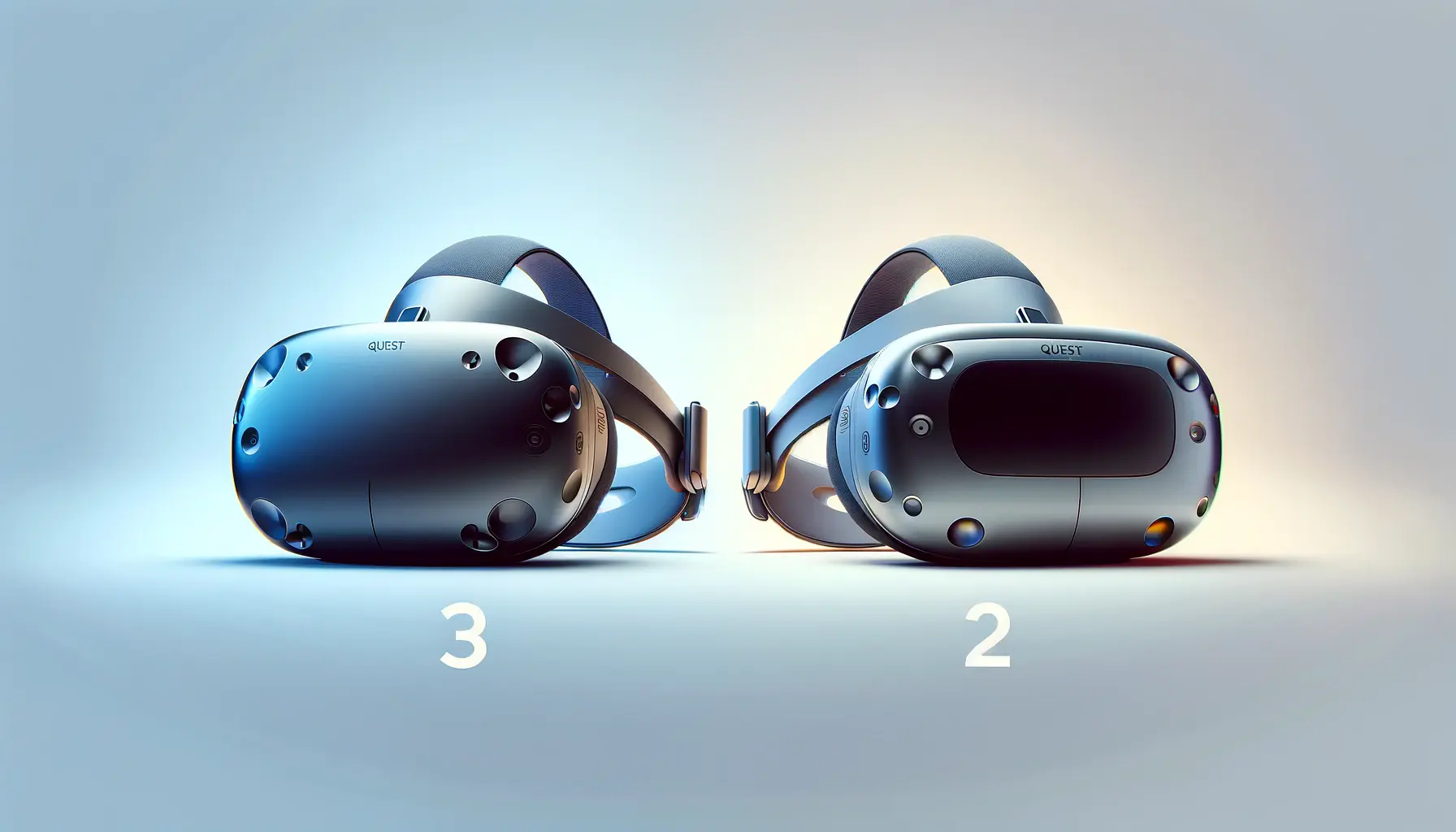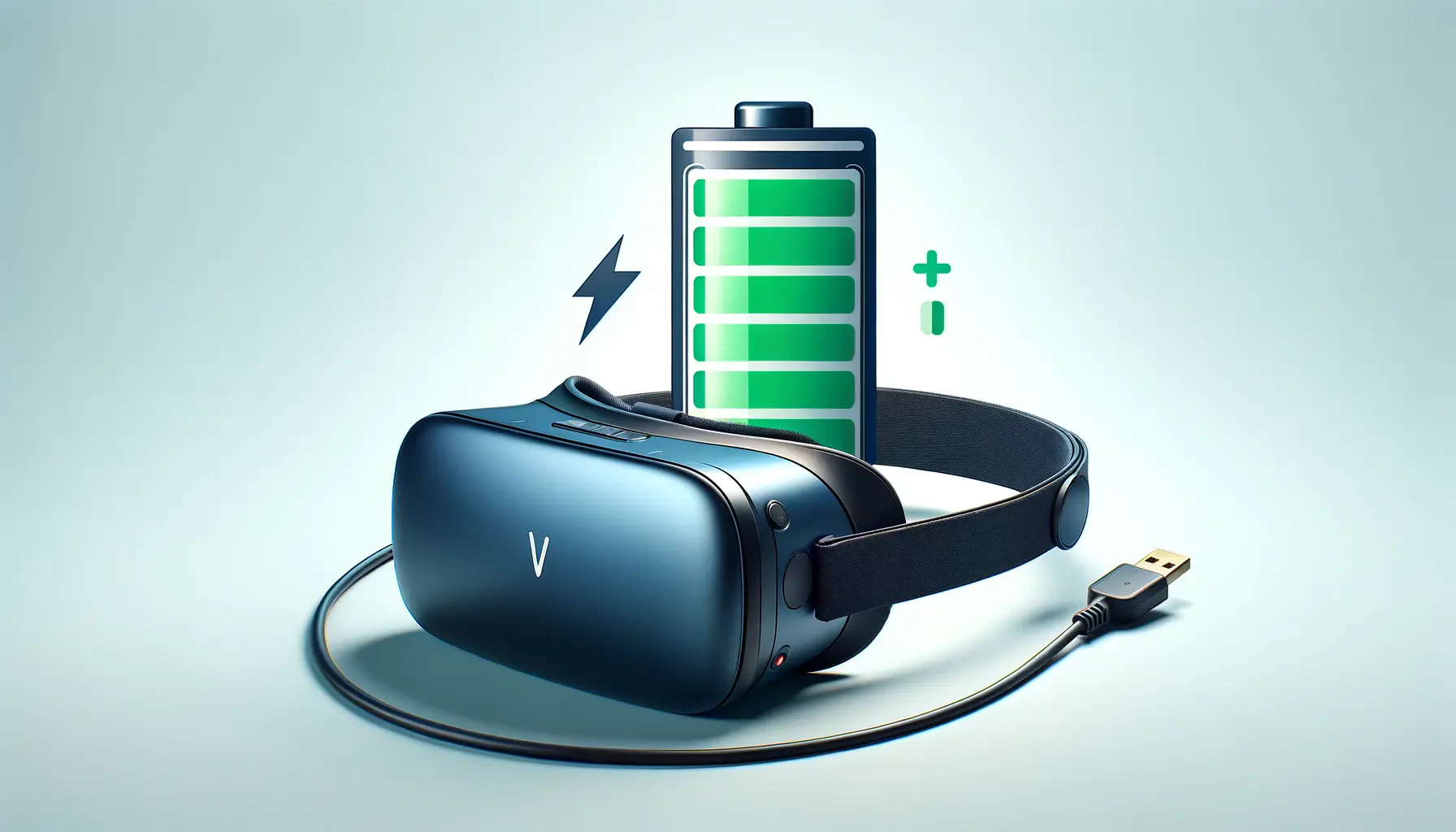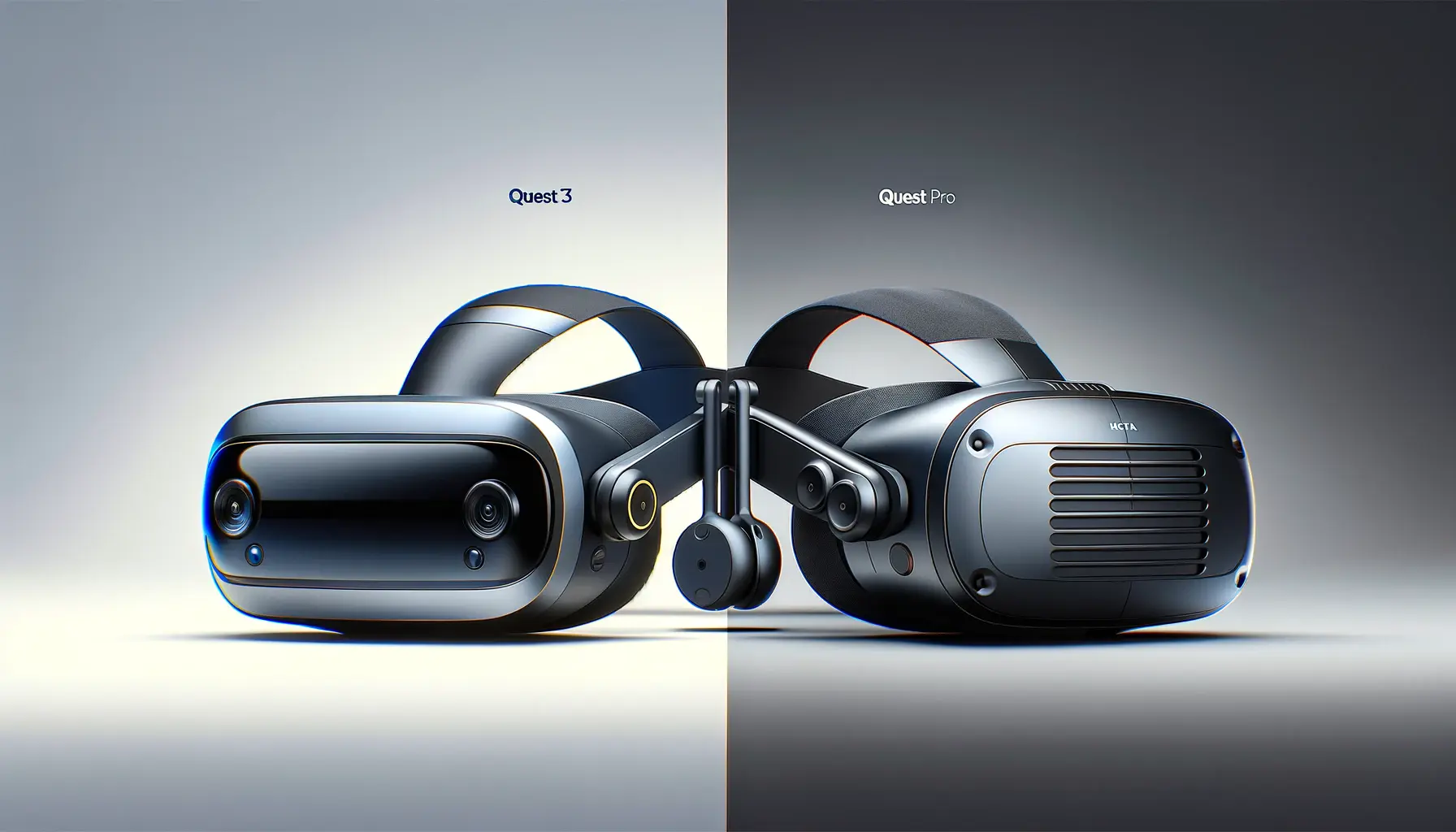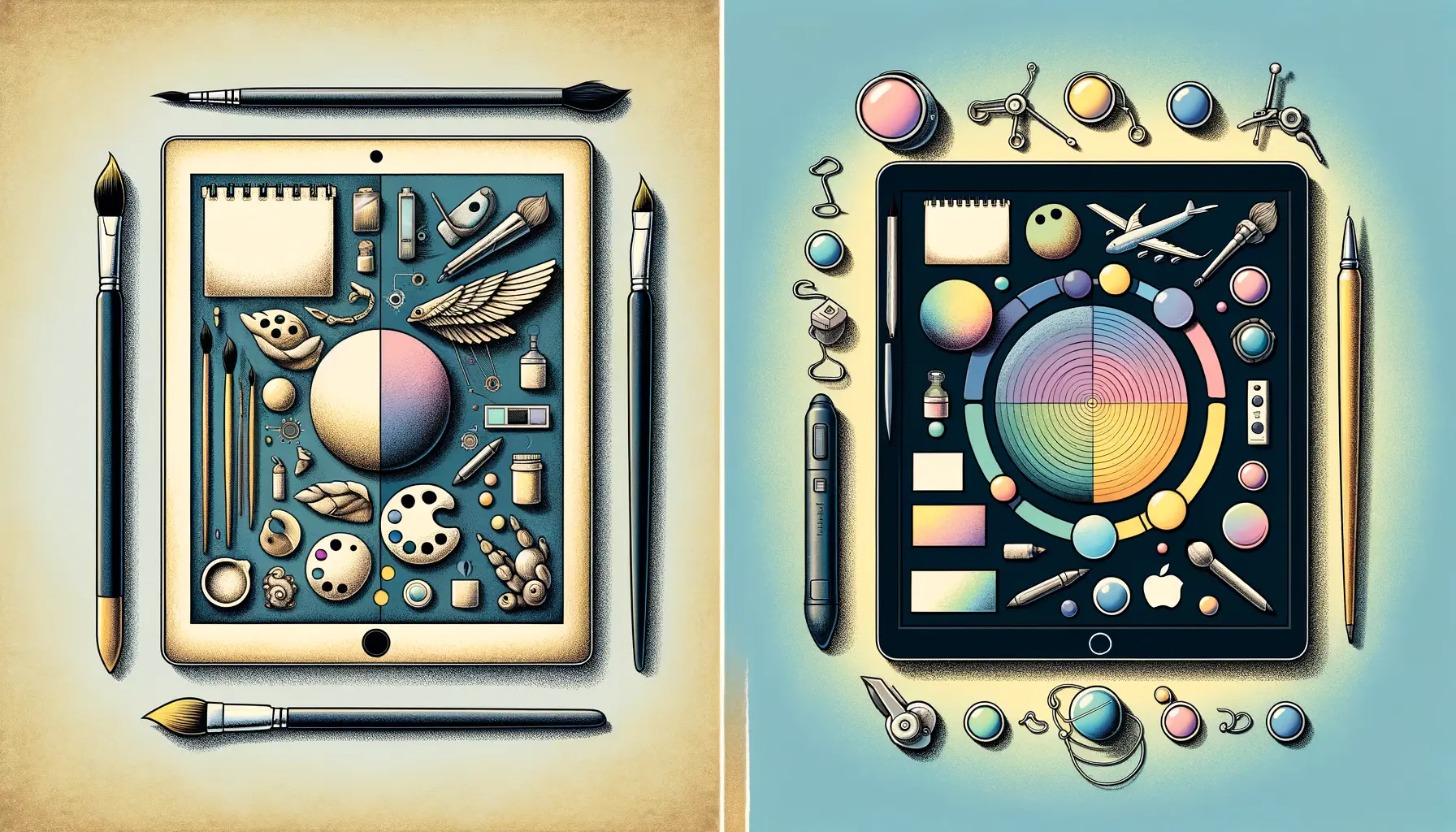The realm of virtual reality (VR) has seen rapid advancements in technology, offering users increasingly immersive experiences.
Among the leading contenders in this space, Meta’s Quest series stands out for its accessibility, affordability, and high-quality VR experiences.
The release of Quest 3 has sparked interest and curiosity among VR enthusiasts and newcomers alike, prompting a closer examination of how it stacks up against its predecessor, Quest 2.
This article delves into a comprehensive comparison of these two headsets, highlighting key differences, improvements, and what these changes mean for users.
At the heart of the VR experience is the technology that powers it.
Both Quest 2 and Quest 3 have set benchmarks in the industry, but with the introduction of Quest 3, Meta aims to push the boundaries even further.
The evolution from Quest 2 to Quest 3 is not just a testament to Meta’s commitment to advancing VR technology but also an indication of the rapidly growing expectations of VR users.
This comparison seeks to uncover the nuances that set these two devices apart and guide potential users in making an informed decision.
Introduction to Quest 3 and Quest 2
Quest 2: The Game Changer
Quest 2 emerged as a game-changer in the VR industry, offering an untethered, standalone VR experience that was both high-quality and affordable.
With its user-friendly design, impressive library of games and applications, and the ability to connect to a PC for an even broader range of VR experiences, Quest 2 quickly became a favorite among VR enthusiasts.
Its lightweight design, combined with a powerful processor and high-resolution display, set a new standard for standalone VR headsets.
However, as with any technology, there’s always room for improvement.
Users expressed desires for better resolution, more immersive experiences, and even more intuitive controls.
Quest 2’s success laid a solid foundation, but it also set the stage for the next leap in VR technology.
Quest 3: Elevating the Experience
Enter Quest 3, Meta’s latest iteration in the Quest series.
Building on the success of Quest 2, Quest 3 introduces several key enhancements aimed at elevating the VR experience to new heights.
Among these improvements are a more powerful processor, higher resolution displays, and a design that’s even more user-friendly.
Quest 3 also boasts features like improved hand tracking, better battery life, and a more immersive audio experience, making it a significant upgrade over its predecessor.
One of the most notable advancements in Quest 3 is its use of cutting-edge technology to enhance the visual and interactive experience.
With a focus on mixed reality (MR) capabilities, Quest 3 blurs the lines between the virtual and real world, offering users a more seamless and immersive VR experience.
This leap forward in technology not only showcases Meta’s innovation but also sets a new benchmark for what users can expect from standalone VR headsets.
The transition from Quest 2 to Quest 3 represents a significant leap in VR technology, with improvements that enhance the overall user experience.
Design and Comfort
The design and comfort of a VR headset are crucial for an immersive experience, especially during extended play sessions.
Quest 2 was lauded for its comfortable fit and lightweight design, making long VR sessions more bearable.
However, Meta took user feedback into account and made several design improvements in Quest 3, focusing on enhancing comfort and usability even further.
Quest 3 introduces a refined strap system and a more balanced weight distribution, addressing one of the few criticisms of its predecessor.
These design tweaks not only improve the overall comfort but also make the headset easier to adjust and fit for different head sizes and shapes.
Let’s delve into the specifics of these design enhancements.
Strap Design and Headset Weight
- Quest 2: Featured an adjustable soft strap that was simple to use but sometimes lacked the support needed for ultra-long gaming sessions.
- Quest 3: Boasts an improved strap design that offers better support and stability, reducing the need for frequent adjustments and enhancing the comfort for longer periods.
Weight Distribution and Comfort
- Quest 2: While relatively lightweight, some users noted that the front-heavy design could become uncomfortable over time.
- Quest 3: Has been engineered with a more even weight distribution, minimizing pressure on the face and forehead and significantly improving comfort during extended use.
The advancements in design and comfort in Quest 3 are not just about making the headset feel better on your head.
They’re also about deepening the immersion.
By reducing the physical discomforts that can pull you out of a virtual experience, Quest 3 allows users to stay engaged in their virtual worlds for longer periods without the need for breaks.
The design improvements in Quest 3 highlight Meta’s commitment to user comfort, making it a key factor for anyone considering upgrading from Quest 2 or entering the VR space for the first time.
Display and Visual Quality
The display quality of a VR headset is paramount in creating an immersive and convincing virtual environment.
Both Quest 2 and Quest 3 have made significant strides in this area, but the advancements in Quest 3 set a new standard for standalone VR headsets.
The display not only affects the clarity and detail of the virtual world but also plays a crucial role in reducing eye strain during prolonged use.
Quest 3’s display technology has seen a comprehensive upgrade, including higher resolution, improved color accuracy, and enhanced refresh rates.
These improvements contribute to a more vivid and lifelike VR experience.
Let’s explore the specifics of these enhancements and their impact on the user experience.
Resolution and Pixel Density
- Quest 2: Offered a per-eye resolution of 1832 x 1920 pixels, which was impressive for standalone VR at its launch.
- Quest 3: Elevates the experience with a per-eye resolution of 2064 x 2208 pixels, reducing the screen-door effect and making virtual environments more realistic.
Refresh Rate and Motion Clarity
- Quest 2: Supported a refresh rate of up to 90Hz, ensuring smooth motion for most VR applications and games.
- Quest 3: Increases the refresh rate to 120Hz, offering even smoother motion and a more comfortable experience, particularly in fast-paced games or applications.
Color Accuracy and Contrast
- Quest 2: Delivered good color reproduction and contrast, but some users desired improvements in dark scene representation and color vibrancy.
- Quest 3: Features enhanced color accuracy and contrast ratios, providing deeper blacks and more vibrant colors, which is especially noticeable in visually rich environments.
The display and visual quality improvements in Quest 3 not only enhance the visual appeal of VR experiences but also contribute to a more immersive and engaging user experience.
By pushing the boundaries of standalone VR technology, Quest 3 offers a glimpse into the future of virtual reality, where the line between the virtual and the real continues to blur.
The enhanced display and visual quality of Quest 3 significantly improve the immersion and realism of VR experiences, setting a new benchmark for standalone VR headsets.
Performance and Processing Power
The heart of any VR headset’s capability lies in its performance and processing power.
This not only determines the complexity of the virtual environments it can render but also affects the smoothness of the experience and the headset’s ability to handle advanced features like hand tracking and mixed reality.
Quest 2 made significant strides over its predecessor, but Quest 3 takes performance to a whole new level.
At the core of Quest 3’s enhanced performance is its cutting-edge processor, designed to handle more demanding VR content with ease.
This leap in processing power not only allows for more detailed and complex virtual worlds but also supports higher frame rates for a smoother VR experience.
Let’s break down the performance enhancements and their implications for users.
Processor and Graphics
- Quest 2: Powered by the Qualcomm Snapdragon XR2 platform, it was a significant upgrade over the original Quest, offering enhanced graphics and improved overall performance.
- Quest 3: Utilizes an advanced version of the Snapdragon XR platform, providing a substantial boost in graphics rendering and computational capabilities, enabling more realistic and complex VR experiences.
Game and Application Performance
- Quest 2: Delivered a solid performance across a wide range of VR games and applications, with occasional limitations in more graphically intensive scenarios.
- Quest 3: With its enhanced processing power, it offers smoother gameplay and more detailed environments, even in the most demanding VR titles, reducing latency and improving responsiveness.
Future-Proofing and Content Development
- Quest 2: While still capable of running current VR content effectively, it may struggle with future, more graphically advanced titles.
- Quest 3: Its superior processing power not only provides a better experience today but also ensures compatibility with next-generation VR content, encouraging developers to push the boundaries of what’s possible in VR.
The performance and processing power of Quest 3 represent a significant leap forward in standalone VR technology.
This not only enhances the current user experience but also sets the stage for more advanced and immersive VR applications in the future.
By investing in cutting-edge hardware, Quest 3 ensures that users can enjoy high-quality VR experiences for years to come, without the need for constant upgrades.
Quest 3’s superior performance and processing power not only enhance current VR experiences but also ensure it remains at the forefront of standalone VR technology as it evolves.
Battery Life and Usability
The practicality of a standalone VR headset is significantly influenced by its battery life and usability features.
These aspects determine how long users can immerse themselves in virtual worlds before needing to recharge the device and how intuitively they can interact with the VR environment.
While Quest 2 offered a balance between performance and battery life, Quest 3 aims to refine this balance further, enhancing the user experience without compromising on immersive gameplay duration.
Quest 3 introduces several improvements in battery technology and energy efficiency, alongside usability enhancements that make navigating VR more seamless and intuitive.
These advancements are crucial for maintaining user engagement and ensuring that the VR experience is as accessible as possible.
Let’s examine the specifics of these improvements.
Battery Life Enhancements
- Quest 2: Provided an average battery life of 2 to 3 hours on a single charge, which was sufficient for most sessions but could be limiting for extended play.
- Quest 3: Features improved battery technology and optimized power consumption, extending the average battery life and allowing for longer uninterrupted VR experiences.
Usability and Interface
- Quest 2: Offered a user-friendly interface and straightforward navigation, making it easy for users to find and launch VR content.
- Quest 3: Builds on this foundation with an even more intuitive interface and additional features that streamline the user experience, such as enhanced voice commands and gesture controls.
Charging and Power Management
- Quest 2: Supported USB-C charging, which was convenient but required users to manage their play sessions around charging times.
- Quest 3: Introduces faster charging capabilities and more efficient power management, reducing downtime and ensuring the headset is ready when users are.
The improvements in battery life and usability in Quest 3 not only make VR more accessible but also more enjoyable.
By reducing the friction associated with charging and device management, users can focus more on their virtual experiences and less on the limitations of their hardware.
These enhancements are a testament to Meta’s commitment to improving the overall quality of standalone VR, making it a more viable option for both casual and dedicated users alike.
The extended battery life and refined usability features of Quest 3 significantly enhance the practicality and enjoyment of standalone VR, making it a compelling upgrade or entry point for VR enthusiasts.
Audio and Communication Features
The audio experience in virtual reality plays a pivotal role in immersion, making users feel as if they are truly part of another world.
Similarly, communication features are essential for multiplayer experiences, allowing players to interact with each other seamlessly within virtual environments.
Quest 2 made significant strides in providing high-quality spatial audio and effective communication tools, but Quest 3 takes these aspects to the next level.
With Quest 3, Meta has focused on enhancing the audio quality and introducing more sophisticated communication features, aiming to create a more immersive and interactive VR experience.
These improvements not only benefit gamers but also users engaging in social VR platforms, educational applications, and virtual meetings.
Let’s explore how Quest 3 has advanced in these areas.
Enhanced Spatial Audio
- Quest 2: Featured built-in speakers that provided a decent spatial audio experience, allowing users to perceive sounds from different directions in the virtual space.
- Quest 3: Improves upon this with advanced spatial audio technology, offering more precise sound localization and a richer audio landscape, making the VR experience even more realistic and immersive.
Improved Microphone Quality
- Quest 2: Included a built-in microphone that facilitated clear communication in multiplayer games and social applications, though with some limitations in noisy environments.
- Quest 3: Features a higher-quality microphone with enhanced noise-cancellation capabilities, ensuring that voice communication is clearer and more consistent, even in loud settings.
Intuitive Communication Tools
- Quest 2: Offered basic communication tools that enabled users to connect with friends and join multiplayer games with relative ease.
- Quest 3: Introduces more intuitive and flexible communication tools, including advanced social features and integration with popular messaging platforms, making it easier to stay connected with friends and meet new people in VR.
The advancements in audio and communication features in Quest 3 significantly enhance the social and immersive aspects of virtual reality.
By providing users with high-quality spatial audio and more effective ways to communicate, Quest 3 not only enriches the VR experience but also fosters a more vibrant and interactive VR community.
These improvements demonstrate Meta’s dedication to creating a more engaging and connected virtual world.
Quest 3’s superior audio and communication features not only improve immersion and interaction within virtual environments but also play a crucial role in building and maintaining a lively VR community.
Content Ecosystem and Compatibility
The value of a VR headset extends beyond its hardware capabilities to the richness of its content ecosystem and compatibility with a wide range of VR experiences.
Quest 2 offered an extensive library of games, applications, and experiences that catered to a diverse audience.
With the launch of Quest 3, Meta has not only expanded this library but also enhanced compatibility and cross-platform support, ensuring that users have access to a broad and engaging range of VR content.
Quest 3’s content ecosystem benefits from the device’s improved hardware, enabling more complex and graphically intensive experiences.
Additionally, Meta’s commitment to backward compatibility ensures that the vast majority of Quest 2 content is available on Quest 3, alongside new titles that leverage its advanced capabilities.
Let’s delve into the specifics of Quest 3’s content ecosystem and compatibility features.
Expanded VR Library
- Quest 2: Boasted an impressive library of VR content, including games, educational apps, and social VR platforms, making it one of the most versatile standalone VR headsets available.
- Quest 3: Takes this a step further by expanding the VR library with new titles optimized for its hardware, including exclusive games and experiences that showcase the device’s advanced features.
Backward Compatibility
- Quest 2: Supported a wide range of content, ensuring that users had access to a diverse array of VR experiences.
- Quest 3: Maintains backward compatibility with Quest 2’s content library, allowing users to enjoy their existing collection of games and apps while also exploring new content designed specifically for Quest 3.
Cross-Platform Support
- Quest 2: Offered limited cross-platform support, allowing users to play certain games with players on other VR platforms.
- Quest 3: Enhances cross-platform support, making it easier for users to connect and play with friends across different VR systems, thereby fostering a more inclusive and interconnected VR community.
The content ecosystem and compatibility of Quest 3 are key factors in its appeal to both new and existing VR users.
By providing access to a wide range of high-quality VR content and ensuring seamless compatibility with previous Quest titles, Quest 3 stands out as a versatile and future-proof VR platform.
These features not only enhance the user experience but also contribute to the growth and diversity of the VR content landscape, making virtual reality more accessible and enjoyable for everyone.
Assuming that newer VR headsets will limit access to existing VR content is a misconception; Quest 3 exemplifies how advancements in hardware can coexist with a rich and accessible content ecosystem.
Conclusion: The Quest for Immersive Realities
The journey from Quest 2 to Quest 3 represents a significant leap forward in the realm of standalone virtual reality.
Meta’s dedication to pushing the boundaries of what’s possible in VR is evident in the comprehensive upgrades and enhancements that define Quest 3.
From its refined design and superior display quality to its impressive performance and expanded content ecosystem, Quest 3 sets a new standard for immersive and accessible virtual experiences.
Key Takeaways
Reflecting on the comparison between Quest 2 and Quest 3, several key takeaways emerge:
- Quest 3’s design and comfort improvements make extended VR sessions more enjoyable, highlighting Meta’s commitment to user experience.
- The display and visual quality enhancements in Quest 3 significantly elevate the immersion factor, bringing virtual worlds to life with unprecedented clarity.
- With its advanced processing power, Quest 3 is not just a step ahead of Quest 2 but a leap towards future-proofing VR technology for more complex and immersive content.
- The extended battery life and usability features of Quest 3 enhance the practicality of standalone VR, making it more accessible to a wider audience.
- Quest 3’s superior audio and communication features improve social interaction within VR, fostering a more vibrant and connected community.
- The expanded content ecosystem and backward compatibility ensure that Quest 3 users have access to a vast and diverse range of VR experiences.
In the quest for immersive realities, Quest 3 embodies Meta’s vision for the future of virtual reality.
It not only improves upon the solid foundation laid by Quest 2 but also introduces innovations that will shape the evolution of VR technology.
Whether you’re a seasoned VR enthusiast or new to the virtual realm, Quest 3 offers an unparalleled experience that blurs the lines between the digital and the physical, making the virtual world more tangible than ever before.
Looking Ahead
As we look to the future, the advancements in Quest 3 serve as a beacon for what’s possible in standalone VR.
The continuous improvement in hardware, coupled with an ever-expanding content ecosystem, promises to bring even more sophisticated and immersive VR experiences to users around the globe.
The quest for immersive realities is far from over, but with Quest 3, Meta has taken a bold step forward, inviting us all to explore the limitless possibilities of virtual worlds.
FAQs: Quest 3 vs Quest 2
Delving into the most common inquiries about the comparison between Quest 3 and Quest 2 to help you make an informed decision.
Quest 3 offers better screen resolution, a more powerful processor, increased storage, and enhanced memory compared to Quest 2, setting a new standard for VR experiences.
Yes, Quest 3 is sleeker, more compact, and features a redesigned headband for better balance and comfort during extended VR sessions.
While Quest 3 introduces efficiency improvements, both headsets offer similar battery life, with Quest 3 prioritizing performance enhancements.
Yes, Quest 3 maintains backward compatibility with Quest 2’s content library, allowing users to enjoy their existing collection alongside new titles.
For users seeking enhanced VR experiences with improved visuals and performance, Quest 3 is a worthwhile upgrade from Quest 2.
Quest 3 features advanced spatial audio technology for more precise sound localization, offering a more immersive audio experience than Quest 2.
Quest 3 introduces enhanced communication tools, including improved microphone quality and noise-cancellation, facilitating clearer voice interactions.
Yes, Quest 3 enhances cross-platform support, making it easier for users to connect and play with friends across different VR systems.













